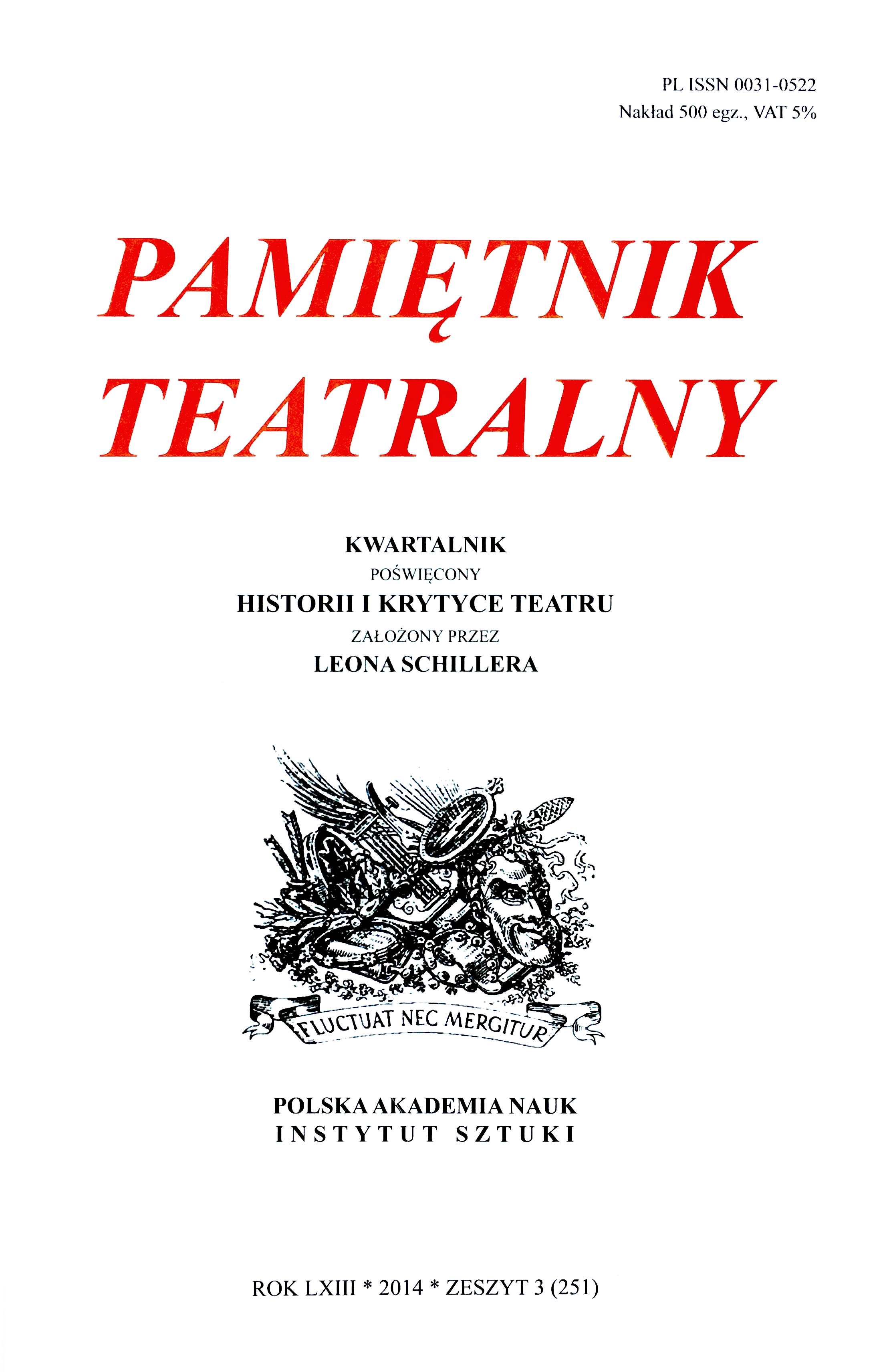Shakespeare, czyli Wielkie łowy
Shakespeare, or the Great Hunt
Author(s): Jarosław KomorowskiSubject(s): Theatre, Dance, Performing Arts
Published by: Instytut Sztuki Polskiej Akademii Nauk
Keywords: Shakespeare;imagery;animal symbolism;
Summary/Abstract: The symbolism of animals derived from medieval culture plays an important role in Shakespeare’s work, and it sometimes holds a place of great prominence. The same may be said of the motif of hunting for animals that can be as exotic and beyond reach as the elephant, or even completely fantastic. In Hamlet, the situation of the Prince of Denmark is described in terms of, symbolically charged, hunting, especially for a unicorn. The Greek Physiologus, as well as later bestiaries originating from it, informed that the best way to catch the wild and fierce unicorn was to send a virgin to the woods, and it was advisable that she be naked. Upon seeing her, the animal would soften, come close and trustingly lay its head in her lap. Shakespeare used this widespread visual-arts motif in the conversation between Hamlet and Ophelia before the performance of The Murder of Gonzago, wherein it functions only visually, without the animal ever being mentioned by name. When Hamlet, after a short, provocative exchange (‘Lady, shall I lie in your lap?’), rests his head in the girl’s lap, it is an onstage transposition of the iconographic, symbolical, motif. It refers to the previous ‘hunt for Hamlet’ effected by Claudius and Polonius, with Ophelia proffered as bait. But Hamlet is not only a unicorn; he is also the symbolic hart from the famous line ‘Why, let the stricken deer go weep,/ The hart ungalled play’. He escapes the hunters unscathed, ready to strike back. It is not accidental that Hamlet calls the provocative, tale-tell show “The Mouse-trap”, and as he stabs the unseen Polonius to death, erroneously thinking him to be the king hiding behind the tapestry, he shouts ‘How now! a rat?’ – because the diabolical symbolism of the mouse and the revulsion caused by rats also play a significant role in understanding the Shakespearean tragedy.
Journal: Pamiętnik Teatralny
- Issue Year: 251/2014
- Issue No: 3
- Page Range: 7-28
- Page Count: 22
- Language: Polish

